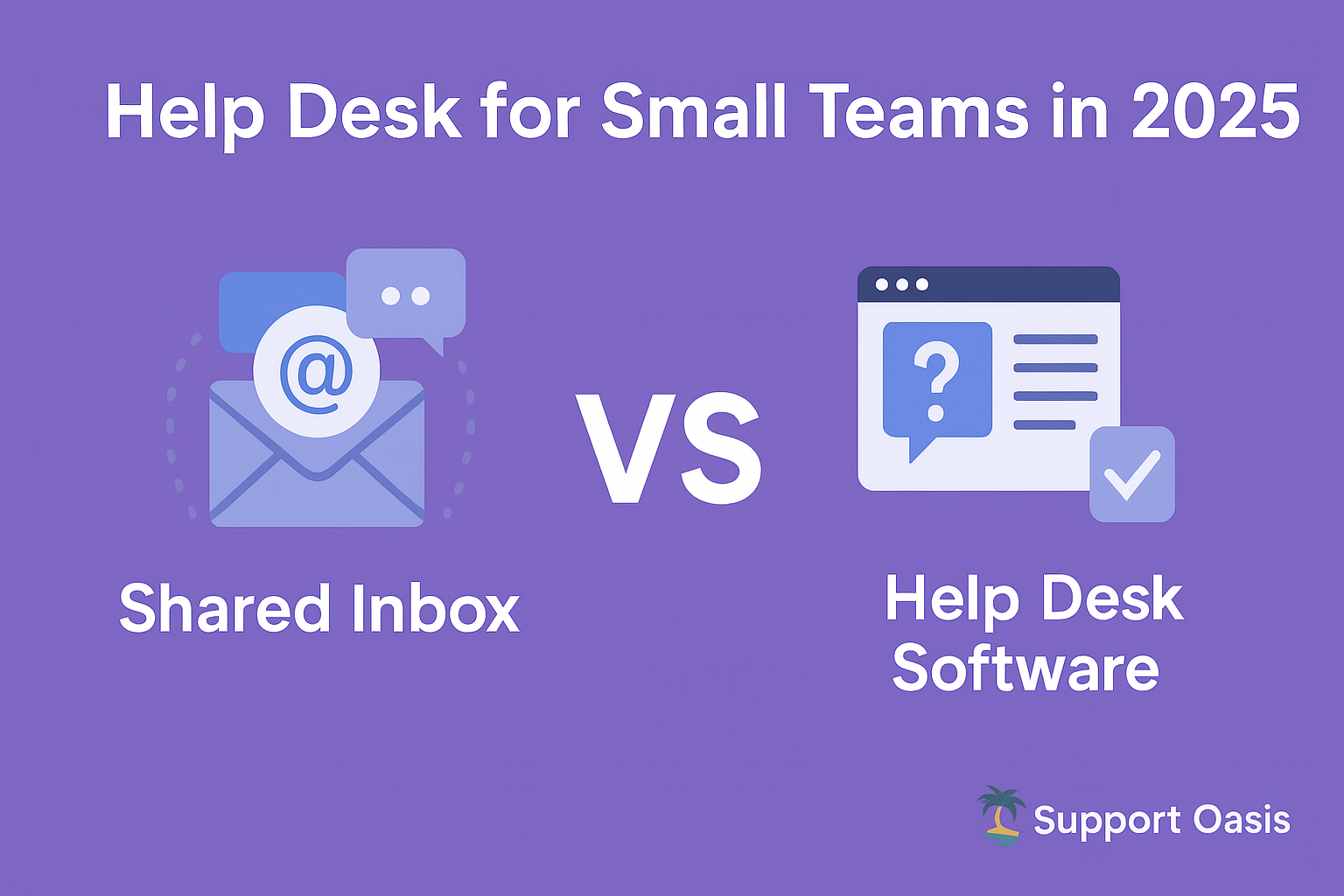Many small teams start with a shared inbox. It is simple, familiar, and works well at the beginning. As your team grows or starts handling more requests, things can get messy. That is when the shared inbox vs helpdesk debate begins.
In this guide, we will explain the differences, the pros and cons of each, and when it is time to make the switch.
What Is a Shared Inbox?
A shared inbox is usually just a regular email account that multiple people can access, such as support@yourcompany.com. Common examples include Gmail and Outlook groups.
Advantages:
- Easy to set up and use.
- No extra cost if you already have an email provider.
- Familiar for most team members.
Drawbacks:
- No ticket tracking or assignment.
- Easy to miss or duplicate responses.
- No reporting or performance insights.
For more on why teams eventually outgrow this setup, read Gmail vs Helpdesk Software: When Startups Should Upgrade.
What Is a Helpdesk?
A helpdesk is a dedicated system for managing customer requests. It creates individual tickets for each query and gives you tools to track, assign, and resolve them.
Advantages:
- Clear ticket ownership and status.
- Collaboration tools like internal notes.
- Reporting and analytics.
- Multi-channel support including email, chat, phone, and SMS.
Drawbacks:
- Learning curve for new users.
- Monthly cost per agent.
If you are considering AI-powered options, see Affordable Helpdesk Software with AI: What to Look For.
Shared Inbox vs Helpdesk: Key Differences
| Feature | Shared Inbox | Helpdesk |
|---|---|---|
| Ticket Tracking | ❌ | ✅ |
| Assignment Rules | ❌ | ✅ |
| Collaboration | Limited | Full notes and mentions |
| Analytics | ❌ | ✅ |
| Multi-Channel | Email only | Email, chat, phone, SMS |
According to Harvard Business Review, communication clarity is one of the biggest factors influencing team productivity, which makes a helpdesk especially valuable for remote or distributed teams.
When to Switch to a Helpdesk
If your team is small but starting to experience:
- Lost emails or duplicate replies.
- Slow response times.
- Lack of accountability for ticket resolution.
- Difficulty tracking performance.
…it is time to upgrade. The switch is easier than most teams expect.
For migration tips, read [How to Switch from Shared Inbox to Helpdesk Without Losing Emails] (future blog idea).
Choosing the Right Helpdesk for Small Teams
When moving from a shared inbox, look for:
- Simple onboarding for quick setup without IT overhead.
- Affordable pricing that fits small-team budgets.
- AI assistance for faster, smarter responses.
- Multi-channel options to expand beyond email when ready.
For more guidance, check Helpdesk for Remote Teams: Best Software for Small Businesses in 2025.
Final Thoughts
The shared inbox vs helpdesk choice comes down to growth and efficiency. If your support volume is light, a shared inbox may be enough. For teams juggling multiple agents, time zones, or channels, a helpdesk provides the structure and visibility needed to keep customers happy.
Ready to Move Beyond a Shared Inbox?
If you are ready for a simple, affordable, AI-powered helpdesk, Support Oasis was built for small teams making this exact transition.
Sign up now and see how much smoother your support can run.
